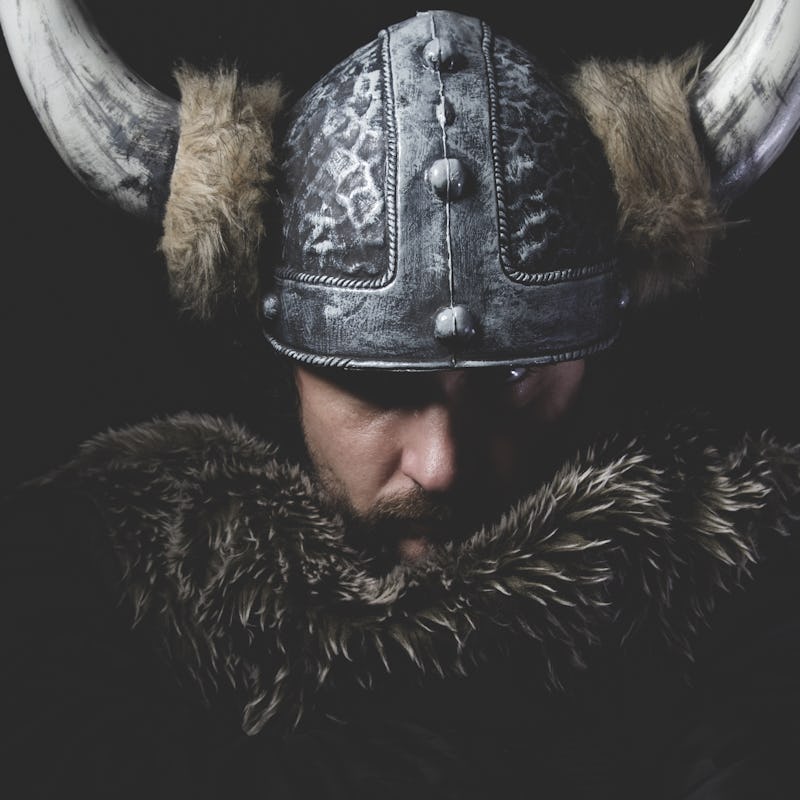Lochlannach: How Viking raids shaped Ireland's cultural landscape
An original comic by Aodh Ó Riagáin (Oreganillo).

Editor’s note: This story is six-page long comic by Irish artist Aodh Ó Riagáin, also known as Oreganillo.
This piece is best read on a larger screen.
Lochlannach
Narrated by Aodh of the Daoine Sí.
Page one: On the people of Ireland, there was darkness. The people adored the fairies. A large smoke — a black pool swirls before us — are we coming to the tail end? of the cord — of Lugh — who spiralled outward from the umbillicus of Uisneach. The catstone marks the burial spot — of Eriu — father of the sun. Mother of the Earth. Once — moved in graceful cycles. Now a knotty depression. The ruin of raiders haunts the country — the ever-ringing rhyme.
Page two: Nochtaim. On longships shallow they bruised blue the cheeks of Mannan Mac Lír — and scattered the goddess tonn — and cut the hips of Danu. Though the horned helmet predates the Lochlannach, it speaks to the penetrative force of their will — ceaseless - bloodshed after bloodshed — the sight and sound of suffering tertiary to their will. They rid the monastic village of its frantic populace and hoard of treasure and with it they spilled along the mother rivers — and crossed underneath Bealach na Bó Finne. A sudden rip-roar racing overhead. Valkyrie’s yell to the cold rhythm — TIL VALHALLAR! — of death rattles.
Page three: This was no call for syncretism. The Four Tribes gathered at the Hill of Tara and established a line of defense. Alas — Lochlannach were beginning to settle — firstly in the circular dwellings. Soon they began imposing stationary banditry on locals — introducing the 'market' into the vocabulary. In time, they established their square-style housing. Battles persisted between Lochlannach and Irish kerns. Indeed the Lochlannach were merely one in a line of several bandits & phantoms... And Charlemagne's mounting pressure upon their own heathen ways lead them to the sea — and lead them to dealing out swift revenge upon the newly Catholic Éire. To the tune of Great Cuchulainn's final riastradh. Comet Enke shot across the cosmos and under the misty gloom of nuclear winter St Patrick rose to the hill of Tara: from Matriarchy — in the name of the Father, Son, Holy Spirit — to Patriarchy. Tradition supposition — AMEN!
Page four: Lochlannach arrived to an age ready-set for a buachaill and a cowherd. Meanwhile a new germination of Lochlannach abandoned their pagan ways to the cult of the cross and stronger horseback warfare. They overpowered the lightweight Irish infantry. And planted their status symbol castles prominently on the land. These Normans had come at the behest of a disgraced king exiled of Leinster whose short-sightedness, under the colonial perfume of Henry II's hand, could not foretell the Lordship who would surpass thereafter. A leash on the land and a vice on the tongues of Irish-speaking mouths and native Irish wildlife and the mouths, forcefully, over-relying on a staple crop. To the juxtaposition of exotic walled gardens which concealed her famine labourers who bore, each the full heft of James Connelly’s best request: We only want the earth. Independence merely doubled down on this path of landownership and competition — and a death warrant placed on the lifestyle of Eire's traveling tinsmiths. And the commitment to a union — who bows its collective head to the will of Lochlannach — with longships, filled now with top guns in an industry of war, ever-lasting.
Page five: An Ruaithreach rides intermittently one to the stampede of a fated tiger — the horn of plenty — whose carcass feeds now a committee of vultures with a vice on the marketplace — and a leash on the land — and the debt shifted on the young. Bubbles shape. Bubbles rise. Bubbles POP. The fitful character of a stampede makes of posh hotels emergency accommodation — bedfellows to the blunt housing of asylum seekers — and the whir of laundries fresh in our ears — and waves of emigration — trasna an spéir. DÍLÁTHAIR — A famed tourist attraction — see the famed Book of Kells for a price — not for Sí. The preserve of a previous perception in the stylings of a cunning scribe, the connective tissue.
Page six: The bounty of the sacred cow and the secret of Kells — the (re)animating principle — all is trivialized in time — the will of the market commands it. The Lochlannach encased within the country. The wind-swift horses of time swirl us into darker pools — so sing — dance — feast — toward the wisdom of Uisneach. Learn the language of travelers far and wide — and the language of a traveler deep inside — the preservative force — and a biting, bitter harbinger of truth — I MO CROÍ — GO BEACHT.
Lore and Translation
This article was originally published on